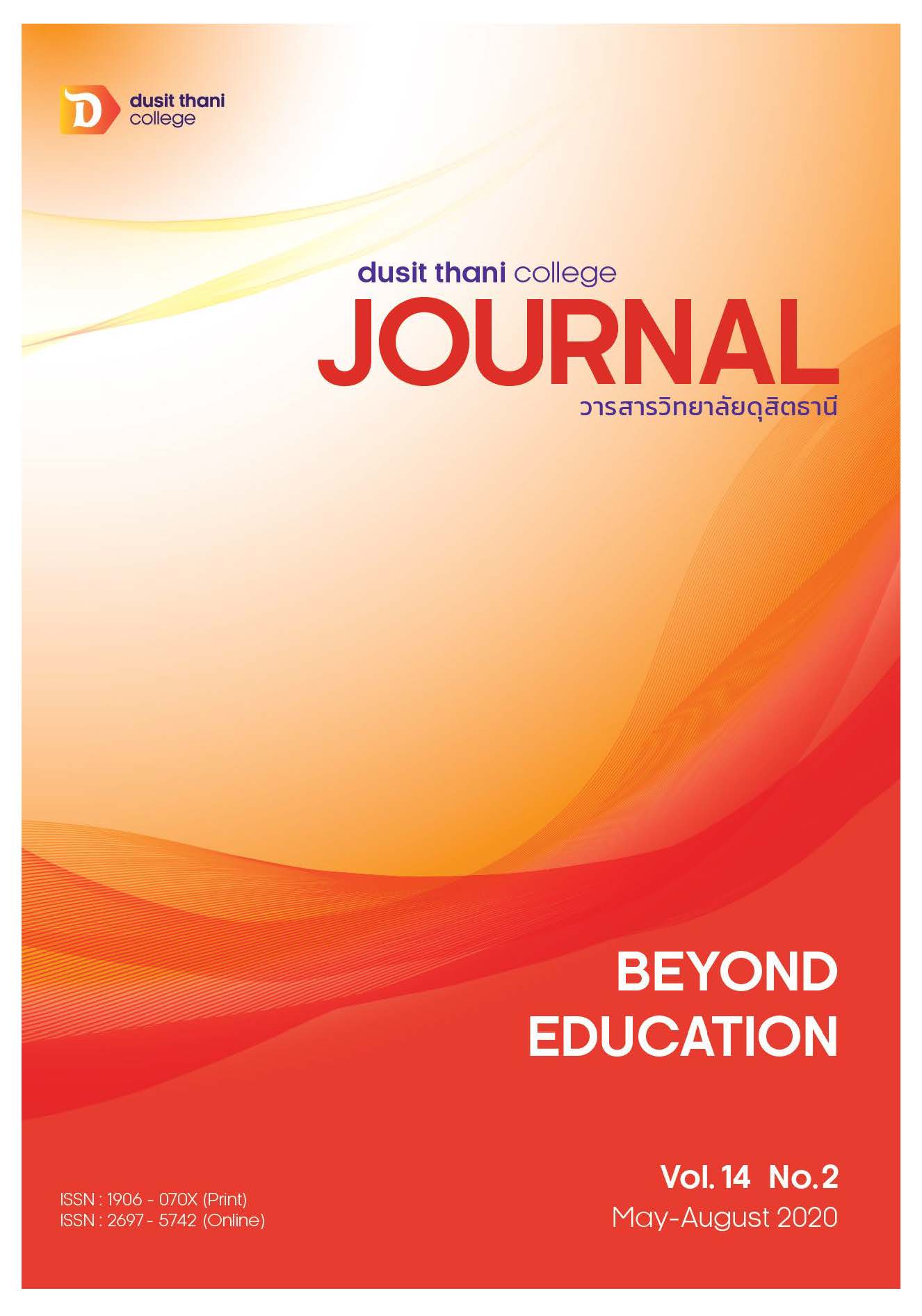Guideline of Developing Environmental Management for Tourism in Koh Chang, Trat Province
Main Article Content
Abstract
The objectives of this research were to study the development of environmental management system for tourism in Koh Chang, in aspect of problems and limitations and propose the development plan of the environmental management for tourism in Koh Chang. This research was a qualitative research which included over one month of area observation and in depth interviews with 45 related stakeholders: 5 from government agencies and private sector and 40 from communities members. For data analysis process, the interview data and area observation data were analyzed, summarized and presented via content analysis of key words and critical questions with methodological triangulation, data triangulation and theoretical triangulation. The researcher created the conceptual framework based on a concept of Balanced Scorecard and designed the structured interview questions
The research data found 1).The problems and limitations of Koh Chang’s environmental management were waste and waste water management system. 2) Environmental problems effected to tourism in Koh Chang were fresh water management, air pollution problem and an electrical system problems of power outage and of power spikes. This caused by trees falling on the line when there is a storm or when a monkey causes a short circuit. Moreover, there is the transport problem, at present, the roads are not linked throughout the island and there is no bridge to connect the island with the shore. 3).Community does not participate in environmental management planning and has been applied not enough Community-based Tourism (CBT) concept due to the number of tourist and labor in the area has been over exceeding the island’s carrying capacity.(CC). 4). Koh Chang was under the administration of three government sectors: Department of National Parks, Wildlife and Plant Conservation, Royal Thai Navy and Designated Areas for Sustainable Tourism Administration(Public Organization) with their own different law, resulting in ineffective integrated policies and activities as well as no long-term plan..
Guideline of developing environmental management for tourism in Koh Chang. 1) Apply household environmental management system and community environmental management system instead of centralized environmental management system. The concept of Balanced Scorecard (BSC) was used for criteria and evaluation indicators. 2) Collective participation of the community is the essential factor of CBT, therefore it was recommended for active community management such as participation in planning, learning environmental management knowledge and compliance in CBT concept of carrying capacity. 3) Suggestion of a teamwork cooperation in planning and activities in environmental management among these government sectors. This benefited in operation time, saving sharing common goal and formulating long-term plan to stable the sustainable development.
Article Details
Article Screening Policy
- All research and academic articles to be published must be considered and screened by three peer reviews in the relevant field / article.
- All articles, texts, illustrations and tables published in the journal are the personal opinions of the authors. Editors don't always have to agree. And no responsibility whatsoever is the sole responsibility of the author.
- The articles to be published must never be published. Where did you first publish? And not in the consideration of other journals If the audit found that there has been a duplicate publication It is the sole responsibility of the author.
- Any article that the reader sees as being plagiarized or impersonated without reference. Or mislead the work of the author Please let the journal editor know it will be your greatest blessing.
References
Graci S. and Dodds R. (2011). Sustainable Tourism in Island Destination. London:
Earthscan Publications.
Graci,S. and Dodds,R. (2011) . Unsustainable Development in Koh Phi Phi,Thailand. Washington: Earthscan Publications.
Kakazu H. ( 2012) Sustainable Island Tourism : the Case of Okinawa .Clevendon:
Channel View Publication.
Kaplan,S.R. & Norton, P.D.(1996). The Balanced Scorecard :Translating Strategy into Action. Boston, Massachusetts : Harvard Business School Press.
Kokkranikal J. and Baum T.,(2011) Tourism and Sustainability in the Lakshadweep Islands. London : Mansell.
Lohmann G. and Nguyen D.N.,( 2011) Sustainable Tourism Transportation in Hawaii : a Holistic Approach New York : Norton.
Moyle B.and Others, (2011) Sustainable Host- Guest Interactions on Islands:
Bruny and Magnetic Islands. Harlow: Longman.
Office of the National Economic and Social Development Council. (2008) Thai Context for
Sustainable Development. Bangkok: Office of the National Economic and Social Development Council.
Office of Economic Competitiveness Development. (2016). Summary Report on the Study for
the Assessment of the Quality of the 33 Tourist Destination Island in the 12 Provinces of Thailand and the Proposal for a Development Guideline . Bangkok: Office of the National Economic and Social Development Council.
Office of the National Economic and Social Development.(2016). The Twelfth National
Economic and Social Development Plan (2017-2012). Bangkok: Office of the National Economic and Social Development Council.
Office of the National Economic and Social Development. (2016) .The Thailand Sustainable
Development Indicators Development Project: Final Report. Bangkok:
Office of the National Economic and Social Development Council.
World Tourism Organization. (1993). Sustainable Tourism Development:
Guide for Local Planners. Spain: Madrid.
World Tourism Organization.(1998). Guide for Local Authorities on Delivering Sustainable
Tourism. Spain: Madrid.
World Tourism Organization. (2005). Making Tourism More Sustainable: A Guide for Policy
Makers. Spain: Madrid.
World Tourism Organization. (2009). Tourism and Community Development:
Asian Practices. Spain: Madrid.


